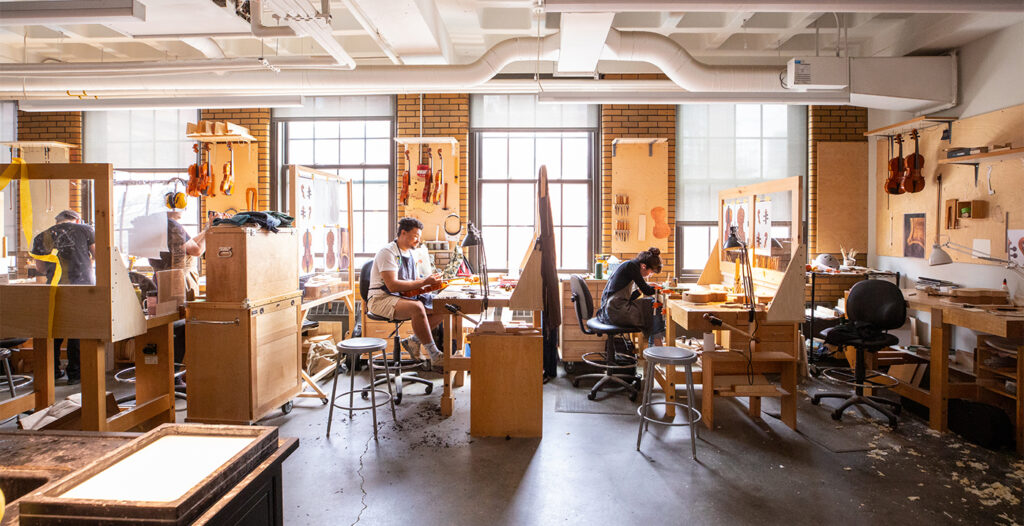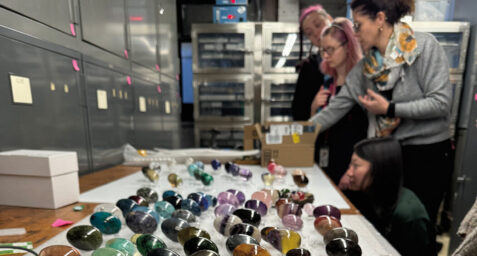For the Love of Music
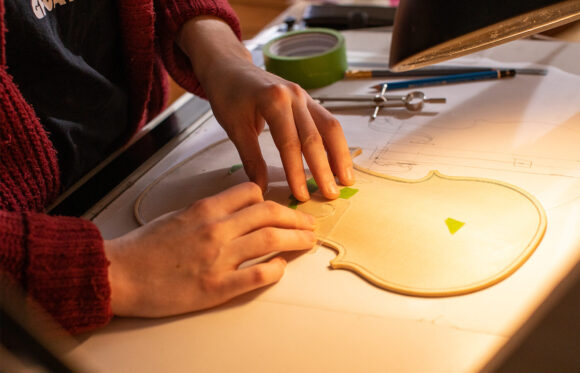
Categories
Violin Making & RepairViolin Making and Repair for Music Enthusiasts
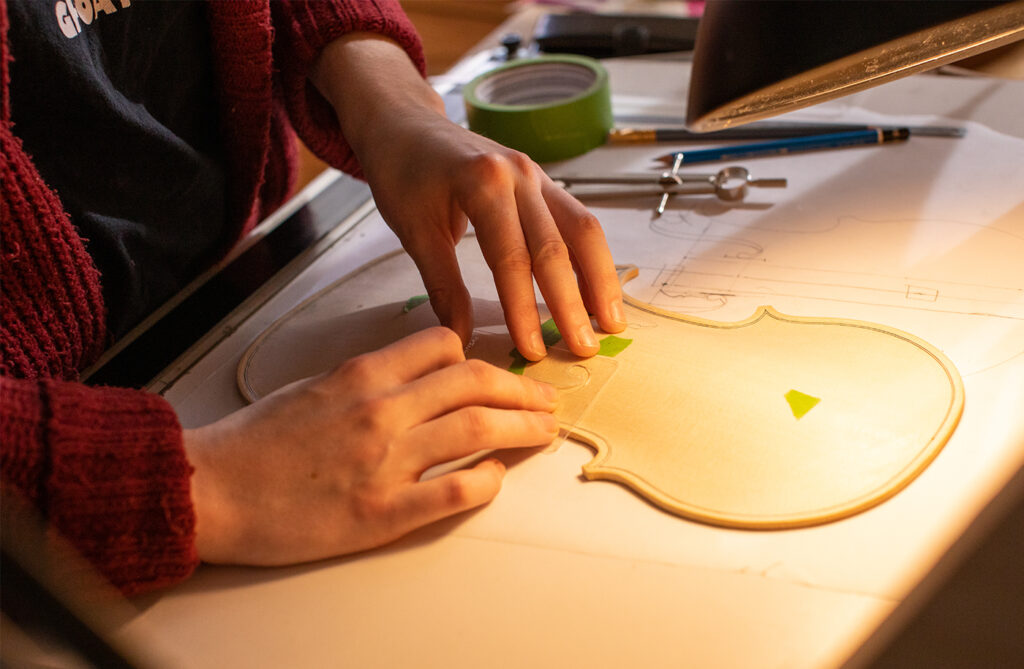
The violin is a beautiful musical instrument. It is also amazingly complex, with a shape defined by graceful curves and angles from every perspective. One study developed a model of the curvature of the violin’s plate based on a famous Stradivarius and found it to be a function of 35 separate parameters. Each of those parameters—from the thickness of the wood, to the height of the arch, to the wood itself—impact the character and tone of a given instrument. Consequently, making a violin is incredibly detailed and painstaking work, and every trained luthier is seeking that next elusive level of tone perfection in their work. More than craft, violin making is more of an art, each handmade violin distinctive in its combination of aesthetic and functional characteristics.
It might surprise you to know that not all luthiers play the violin, or if they do, it’s not what primarily drives them. Jedidjah de Vries VM ’17 puts it this way: “I have played the violin since I was little. But I always enjoyed the sound of the instrument, and the ways that the physical object in my hands could make those sounds, more than practicing or even playing.”
Armand Aromin VM ’13 was a former Music Education student who turned to violin making. “I chose to study violin making because I wanted to combine the best of the music and wood-working worlds.”
Jess Fox VM ‘06 was a picture framer for a Minneapolis art gallery. “Studying violin making was a no-brainer for me. I play the violin and have a background in visual art and woodworking. Violin making combines those three interests perfectly into a great career.”
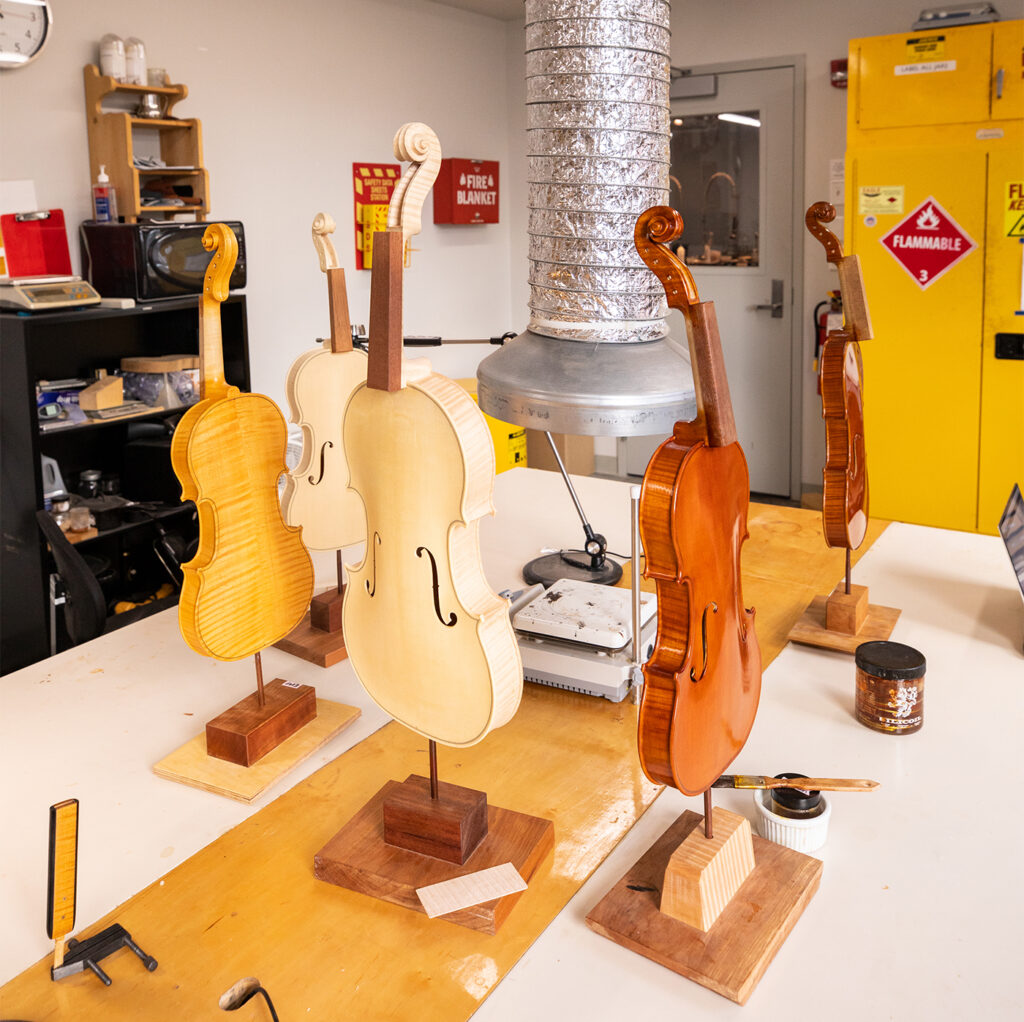
Violin making is truly a labor of love and discipline. While luthiers work differently, it can take 200 hours or more to make a single instrument. From the selection of just the right types and age of the woods to the 15 or more coats of varnish, each step requires technique and precision.
And, once the violin is finished, setting it up involves skill and knowledge. From the wood and shape of the bridge that supports the strings, to the chinrest and the strings themselves, each plays its own part in the tonality of the instrument. And some musicians would argue the bow itself plays an especially important role in bringing out the best in a given violin.
Although a luthier may not ultimately play their own instruments in the long term, there is great satisfaction in hearing their creation being played by an accomplished musician. And, as each musician is singular in their playing ability and approach, so is each violin equally unique given the almost infinite number of variables in its making. Pairing a musician with an instrument that brings out the best in their playing is the ultimate goal. For that reason, violin makers who can create uniquely beautiful and tonal instruments are always in demand.
As one of only a few full-time instrument making programs in the U.S., the Violin Making & Repair program at North Bennet Street School is highly-sought. Learn more about the program here.
